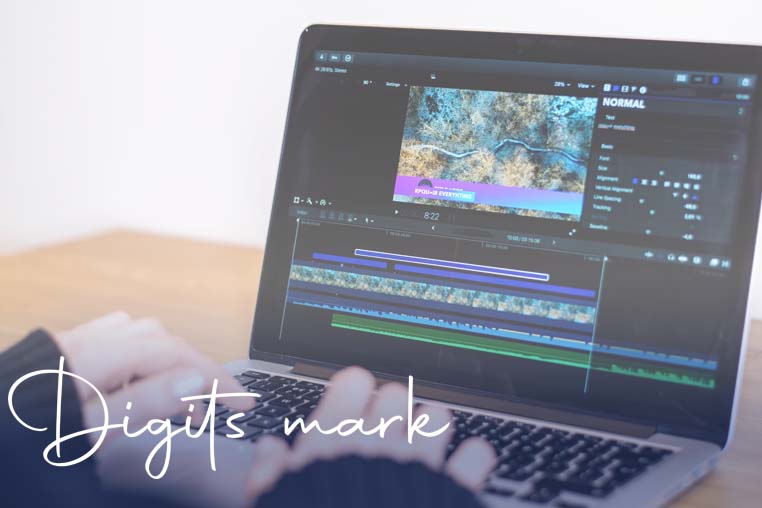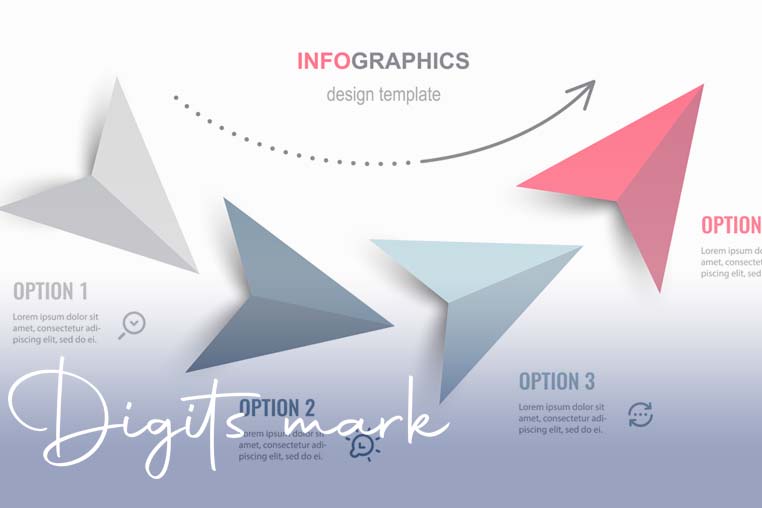Introduction
These days, with the development of technology, montage has become one of the techniques used to collect a group of separate animated images with one subject. This modern technique is based on cutting out a section or part of the moving images in a movie, so that the director, writer and audio and video technician choose the extracts professionally and accurately. And they are linked accurately, harmoniously and integrated
The montage works on choosing and photographing products professionally, and once this process is done with a regular plan and a good work, you will notice that day after day you will see that photographing products is the work that makes you rich while you are at home
Table of contents
Introducing montage, its importance and types
Basic principles of the art of montage
3 requirements to do the art of montage
Top 5 most common techniques for montage
What are the best directing rules and tips for video shooting and editing
Definition of montage, its importance and types
Editing is one of the most important steps of filmmaking, without which the cinematic or television work remains just untidy video clips or clips, and is linked only to the appearance of the actors themselves. Scenes and video clips are rearranged and some scenes are cut
The importance of montage lies in that
It shortens time by reducing long events to three minutes, for example
The viewer sees simultaneous events that occur at the same time in different places by quickly moving from one scene to another
It adds more fun to the journey in the movie instead of simply skipping it, for example, the time that the character needs to go on a long trip from one place to another can be very effectively shortened by using a montage that shows her on the train and stopping in several cities on her journey
Types of montage
Quick combo
Insert joke
training montage
parallel montage
Compare and contrast
intellectual montage
mental conflict
Top 5 Most Popular Editing Techniques
Usually a montage shows the progress of events, and gives the audience an idea of the content that they will see, which can be used to stimulate the audience’s feelings. For example, a montage in a romantic movie shows the growth of love between two parties who have recently met each other, and a sports movie montage provides a series of scenes for an athlete practicing for his match. It can raise the enthusiasm of the viewer towards the conclusion, while the montage of the drama can express feelings of sadness and sorrow, such as presenting scenes of a sad woman who lost her husband, and in horror films, for example, the montage can show a group of people preparing to protect their home from a killer or from supernatural forces
That is why we will show the most important and common techniques for montage:
Quick time-lapse shots that shorten time and show the progress of events without ignoring the viewer's mind
Showing the character's feelings, not talking about them, which makes the montage more effective
Using a narrator's voice to show the audience important information and events that took place during the montage
Use music to highlight slow action and emotions experienced by the characters
Scrolling text on the screen to quickly provide information and inform the audience about character and story developments, which often occurs in the form of an epilogue at the end of the film
Basic principles in the arts of montage
There are three basic principles that must be taken into account by the person responsible for the production of the film
Find the most appropriate place to cut and transfer the scene from one camera to another and from one corner to another
Estimating how long the snapshot remains on the screen
The movement corresponds from one shot to another, and the length and limits of the shot fit with the general rhythm of the film
One of the craftsmanship of editing that contributes to developing the story of the film
logical sequence
Justification for cutting
suspense and excitement
Cutting in motion
Synchronous sound with picture
cut out
Requirements to do the art of montage
First: Understand video components, formats, and broadcast technologies
Video files have many types and vary in quality levels in each type. Television and satellite broadcasting systems also differ, and each system has specifications and standards that are required to be available in the video so that it can be broadcast in a correct manner
The editor must know what the resolutions are, standard SD, ED enhanced, HD, 4K and UHD
Second, learn the tools used in montage
Those wishing to practice montage should choose a montage program, learn the tools and commands of the program, and know how to perform the various tasks of montage
Among the most prominent of these tasks, how to cut, paste and delete, how to adjust the shapes of transitions between clips, and how to add effects and filters to the clip
As well as how to write texts on the video, how to add audio and sound effects, and finally how to present and output the video in the appropriate type and format for presentation and publication
Third: Acquiring the skills and tasks of montage arts
Some people think that just learning and professionalizing a editing program and knowing video editing tools and adding transitions and effects is enough for them to practice montage, but there is a big difference between someone who knows how to use tools, and someone who makes these tools an art and presents an interesting and influential show. In most cases, montage may be associated with the content industry and how to market with search engines. For more information, click on search engine marketing
The montage performer performs a number of creative tasks in the montage process, comprehends its principles and functions, and benefits from the expertise and experiences of artworks published in the media
What are the best directing rules and tips for video shooting and editing
Montage is not just a technical work, but rather a purely mechanical and technical process, through which the scenes are brought together, but in fact the montage is the final and very important step in making the film and putting it in the form that will be presented to the viewer, because the montage is able to change the plot of the film and reformulate it. And manipulation of time, implication, as well as controlling the rhythm of the film, whether it is fast or slow. You may be interested in reading about the importance of designing an electronic business card
Here we will mention the most important rules for the production of montage
The right shot size
Don't shoot the action in a Big Close Up because it magnifies everything and puts the object out of focus
An exception to this can be made with a professional actor, or when shooting at a very obtuse angle to the lens, as in some horror scenes, or in battle scenes
Rely on close-up photography, as it focuses attention on the entire face and its expressions
Pay attention to the shape of the eyes in the close-up and the medium close-up, and make the reflection of the light on them appear in a natural way, the reflection may be from headlights, from window light, or from outside daylight
When shooting a panoramic shot, shoot it in both directions, one from right to left, and the other from left to right, it is useful in the editing stage
Composition and vacancy within the staff
Make the movement of people within the cadre and not extreme to the edge, except
If the movement represents the end of a shot and the person exits from it, or if the movement is fast (such as running), then the presence of the person at the edge expresses progress or delay
When photographing a person looking at an object, put a space in the direction of the character's gaze, and when photographing the person and the subject in a single shot, have them on opposite sides of the frame with a natural (space) space between them
When photographing the beholder in a snapshot and the viewer in a snapshot, it is taken into account that the spaces of the spaces are opposite to each other
If the person looks to the right of the frame, he leaves the void on the right side, and therefore the next shot of the visible object takes into account the presence of a void on the left side
When photographing three or more individuals, avoid grouping them in a straight line, but rather make the composition in depth by photographing at an angle, this allows people more space for movement within the frame
An exception is the case of a crowd being photographed in a general shot
Matching shot
When shooting a dialogue between two people, the mirror shot (reflex angle shot) is used using two cameras in opposite directions, provided that they match the angle of the camera and lens and the distance from the body
When shooting identical shots of two people of different height, use two different heights for each camera so that the height of the camera is the same as each person's eye level
This procedure is useful for overcoming the domineering and submissive effect of shooting at low or high angles
And if the length difference is large, this can be adjusted by sitting on two chairs, and placing cushions to adjust the height
When shooting a dialogue between three characters, do not shoot two consecutive identical shots of two of the three characters, this will show the middle character twice, as if he jumped from one side of the first shot to the other side in the second shot
A suitable alternative is that two people can be photographed in one shot, and then the third person in a subsequent shot
Void and anomalous bodies
Leave a fixed space at the top of the character's head, and make sure that it is not too big or too small, and make the amount fixed for all the dialogue characters so that no defect appears during the transition between shots
When photographing a dialogue between two people, appropriate distances between the interlocutors should be taken into account to obtain a clean shot of the individual
Pay attention to the background and foreground, and remove any anomaly or attention-grabbing object that steals the viewer's attention from the main objective, unless it is part of the story
Examples of anomalies include the presence of animals in front of or behind the frame, or the presence of passers-by in the background waving their hands at the camera.
The same applies to the striking colors, graphics, and decorations in the background that steal attention or distort the shape of the character
reaction
When filming an action shot, it is matched by a shot that shows the reaction associated with it, unless the viewer understands the reaction without the need for the shot, and with the exception of the case if the director deliberately hides or postpones the reaction with the aim of excitement or suspense
Extra time for the shot
When shooting a shot, leave an extra period of time in reserve after completing the scene, as a time lag may be needed during the editing and transition from one shot to another
Example: A man arrives at the door, opens it, then enters and closes the door behind him. Here you wait for an extra moment and then finish the shot
relay trap
Watch out for the sequence trap, which is the presence of a time-varying object or activity within the shots, such as a large clock in the shots, sun and shade movement, or smoking a cigarette that wears off over time
This trap appears due to repeated attempts to photograph over time, and it exposes the montage and cutting work, as the audience often notices it
Conclusion
If you want to use any of the professional e-marketing and social media advertising companies, you can contact the digitsmark team, where we offer you a group of specialists in professional web design services, social media and SEO services, and many various digital marketing services. Hurry up to contact us through our various digital platforms, or visit the digitsmark website on the Internet
Articles you may be interested in reading on our blog
Hosting and email installation services
web design
Social Media Marketing
How to Marketing Through Influencers




